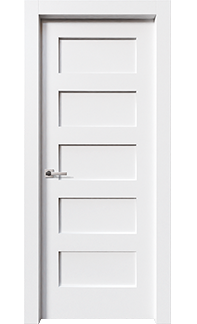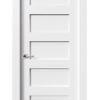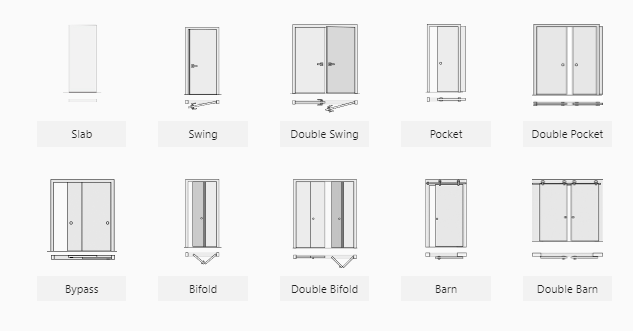Description
THE DOOR NAME ORIGIN – “SHAKER STYLE 5 EQ PANEL”
The design of this interior door is in keeping with the Shaker philosophy of favoring simple yet highly dependable functionality over complex structures with what the original craftsmen viewed as excessive ornamentation, inlays, embellishments, and so forth. Throughout history, simplicity has come back into fashion because there is only so much complexity the human eye can take without getting, well, weary of it.
Simplicity can be quite elegant, not to mention that it almost invariably costs less. This is true in architecture, fashion, and even science, and it is most certainly true when it comes to buying interior doors. Shaker craftsmen were well aware of this. In the middle of the Nineteenth Century, at the peak of their movement, when their influence was spreading rapidly westward from New England, it wasn’t for lack of funds that they stuck to their themes and ideas; it was a matter of principle with them.
Because this interior door falls into our Hi-Dur category, let’s talk a little about the finish. While our company does carry doors with traditional finishes (and, should you be inclined to explore that collection, please do so), the “wrap” method offers advantages that were unheard-of only recently.
f colored pigments mixed with a water-soluble binder medium, usually glutinous material such as egg yolk. Portraits and ornaments were executed in this medium, and the wood panel was the surface of choice. One of tempera’s interesting features is that it is not as easily absorbed by wood as other mediums. Some sort of primer was necessary, of course, but pretty much any substance that dried evenly could be used.
FINISH: WHITE
This is a bit tricky. Isn’t White the default finish that would look great on any interior door? Well, not quite.
W. is the color most often associated with perfection, honesty, cleanliness, newness, neutrality, and exactitude. The pigment has been known and used by humans since prehistoric times. In ancient Egypt, W. symbolized purity. Roman patricians paraded around in W. togas to distinguish themselves from the common folk. It was the color of choice of French monarchs. Architects of all epochs used W., with considerable enthusiasm, in various projects and for various reasons. In the United States, architects favored it when designing churches, capitols, and municipal buildings – which is, in fact, a tradition they inherited from classical and Renaissance architecture. According to some experts, most of the buildings in the celebrated Forum were either made of, or clad in, W. marble. In Taoism, it represents the yang or masculine energy, one of the two complementary natures of the universe. Many authors, both classical and contemporary, have referred to W. as a sign of purity, either physical (like William Shakespeare, whose treacherous usurper monarch wishes a heavenly rain would cleanse his blood-stained hand, washing it “white as snow”) or spiritual (like Tennessee Williams, who named his lead character Blanche (derived, incidentally, from the Germanic word blanc)) as a symbol of her innocent child-like spirit, perceptible from the moment she makes her first entrance (through the interior door stage-left).










